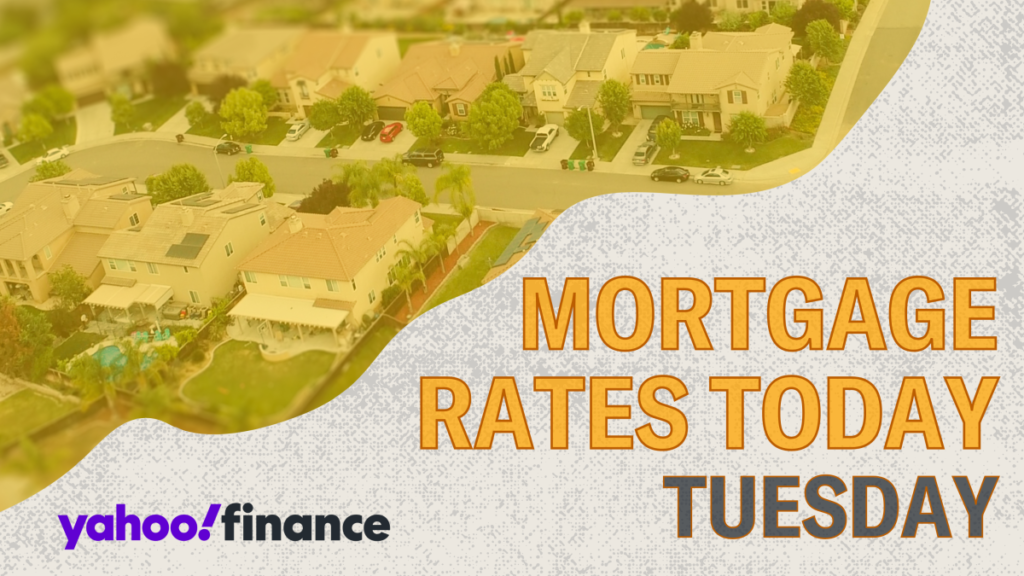Today’s mortgage rates have shown an upward trend, according to Zillow data. The 30-year fixed mortgage rate has increased by 16 basis points to 6.18%, while the 15-year fixed rate has also risen by 24 basis points to 5.48%. Despite this increase, it is essential to note that average mortgage rates have experienced a significant decrease over recent months. Historically, October is often considered an opportune time for home buyers due to favorable conditions, including a reasonable inventory of homes and a dip in buyer demand. This combo provides prospective buyers with more choices and less competition compared to earlier months in the year. Given the substantial drop in mortgage rates from last year, many are wondering if now is the right time to invest in a home.
Currently, the mortgage rates present a varied landscape for potential home buyers and those considering refinancing. The prevailing rates this month, as per Zillow, include a 30-year fixed mortgage at 6.18%, a 20-year fixed at 6.02%, and the 15-year fixed at 5.48%. Additionally, adjustable-rate mortgages (ARMs) show rates of 6.50% for a 5/1 ARM and 6.70% for a 7/1 ARM, while VA loans are slightly lower at 5.50% for the 30-year option. Refinance rates are typically higher than purchase rates, but recently they have aligned closely with purchase rates, creating an inviting environment for borrowers considering home refinancing.
For those contemplating their options, utilizing a mortgage calculator, such as the one offered by Yahoo Finance, can offer valuable insights into how various mortgage term lengths and interest rates may influence monthly payments. The calculator accounts for additional factors such as property taxes and homeowners insurance, providing a comprehensive view of what a borrower might expect to pay monthly. This can help home buyers make informed decisions based on their unique financial situations and goals.
When comparing 15-year and 30-year fixed mortgages, the general rule is that 15-year rates are lower, offering substantial savings in interest over time. However, the monthly payments will be higher, as the loan is amortized over a shorter period. For example, on a $400,000 mortgage with a 30-year term at 6.18%, borrowers would pay about $2,445 monthly, accumulating approximately $480,087 in interest over the life of the loan. Conversely, a $400,000 15-year mortgage at 5.48% would result in monthly payments around $3,264 but would incur only $187,536 in interest. Therefore, while a 15-year mortgage is advantageous in terms of total interest paid, buyers should consider monthly affordability, potentially impacting their choice of loan.
Fixed-rate loans lock in the interest rate for the life of the loan, which can provide stability in budgeting for mortgage payments, while adjustable-rate mortgages (ARMs) can start with lower rates but involve some risk since rates can adjust after an initial fixed period. For instance, with a 7/1 ARM, borrowers enjoy a fixed rate for the first seven years before their interest rate can fluctuate based on market conditions. While ARMs may offer lower initial payments, they could increase significantly after the fixed period ends, making fixed-rate mortgages preferable for many borrowers in today’s economic climate.
Looking to the future, one of the pressing questions among potential home buyers centers around the trajectory of mortgage rates. Since early August, mortgage rates dropped until the Federal Reserve reduced the federal funds rate. Following this decrease, rates have fluctuated but are unlikely to fall below 6% for the remainder of the year. Mortgage rates tend to reflect expectations surrounding the Federal Reserve’s moves regarding interest rates. Current rates seem to incorporate an anticipated cut in November but are expected to stabilize above 6% throughout 2024, with potential decreases becoming more pronounced in 2025, should the Fed persist with its rate cuts. Thus, while volatility remains, careful monitoring of economic indicators will be critical for prospective buyers making significant financial decisions in the housing market.

